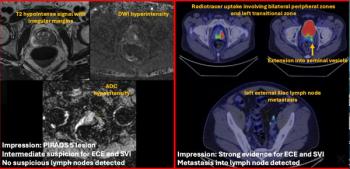FDA Clears Software for Enhancing CCTA Assessment of Atherosclerosis
Through analysis of coronary computed tomography angiography (CCTA) images, the PlaqueIQ software provides quantification and classification of atherosclerosis, a common cause of myocardial infarction (MI) and ischemic stroke.
The Food and Drug Administration (FDA) has granted 510(k) clearance for PlaqueIQ™, an emerging software that may enhance quantification of arterial plaque buildup shown on coronary computed tomography angiography (CCTA) imaging.
Employing image restoration algorithms to reduce motion and calcium blooming artifacts, the
Emphasizing that approximately half of the United State population between 45 to 84 years of age have atherosclerosis without symptomatic presentations, Elucid maintained that PlaqueIQ may facilitate enhanced visualization and characterization of arterial plaque, and prevention of major adverse cardiovascular events.
“It’s time to shift our focus from merely estimating risk and treating risk of MI to directly visualizing and treating the disease itself by looking at the coronary arteries,” maintained Amir Ahmadi, M.D., an associate professor of medicine and cardiology at the Icahn School of Medicine at Mount Sinai in New York, N.Y. “I believe that PlaqueIQ will enable physicians to better ‘see’ the disease — specifically plaque quantity and type — so that we can treat patients with greater precision and in (a) personalized manner, improve their quality of life, and ultimately prevent (myocardial infarction) and stroke more effectively.”
Newsletter
Stay at the forefront of radiology with the Diagnostic Imaging newsletter, delivering the latest news, clinical insights, and imaging advancements for today’s radiologists.





























